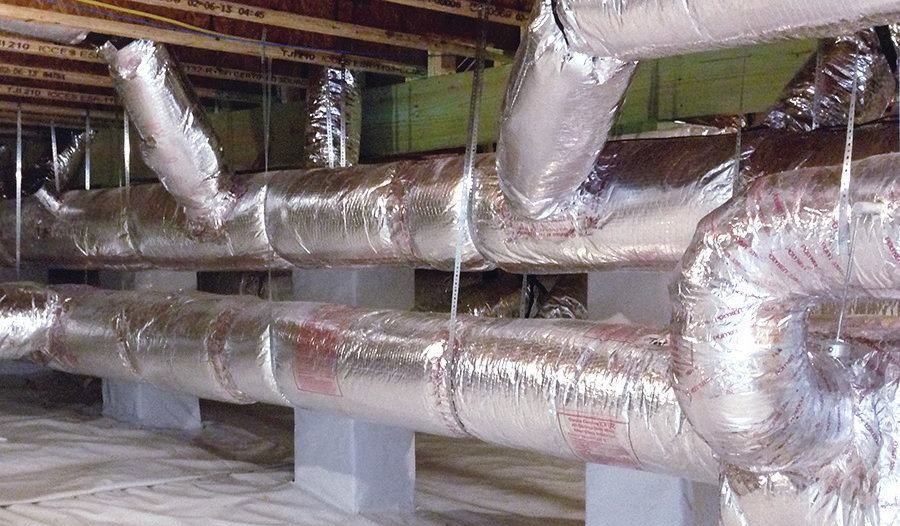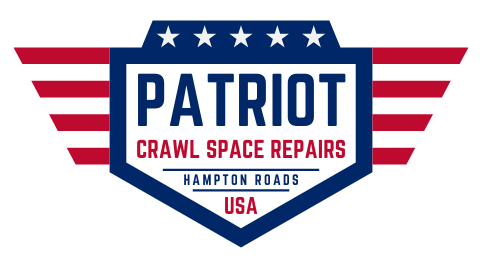The Crawl Space Blog
Expert information and advice on everything crawl space related.
Watch The Full Video
How Crawl Space Ductwork Affects Home Health

The Hidden Connection Between Crawl Space Air and the Air You Breathe
Every time your HVAC turns on, it pushes air through the ducts that run beneath your home. If your crawl space is musty, that same odor is inside those ducts. The system doesn’t just deliver cool or warm air—it carries crawl space air, spores, and moisture through every vent in the house. Homeowners are often shocked to learn that the dirtiest, moldiest material in the crawl space is usually the insulation wrapped around the duct lines themselves.
Why the Ductwork Becomes the Problem
Crawl spaces in Hampton Roads stay damp most of the year. When warm indoor air moves through cool metal ducts, condensation forms and soaks into the surrounding insulation. Over time that insulation becomes a sponge for moisture, dust, and mold. Once mold starts growing inside the duct wrap, it spreads along the entire run, feeding on the outer jacket and collecting debris from the crawl space. The air inside those ducts flows directly through this contaminated insulation before entering your living areas.
How Contaminated Ducts Affect Indoor Air Quality
If your crawl space has a musty smell, chances are you’re breathing it upstairs. Mold spores, bacteria, and fiberglass particles from deteriorated insulation get carried into the HVAC system and blown throughout the home. It’s why some houses never lose that “old basement” odor no matter how many candles or filters you use. The source isn’t the carpet or walls—it’s the ductwork pulling crawl space air through moldy insulation.
Prolonged exposure to this air can cause headaches, allergies, and chronic congestion. For families with asthma or respiratory sensitivity, it can be a constant trigger. Because ducts run continuously, the exposure never really stops until the crawl space and duct system are both corrected.
Energy Loss and Moisture Damage
When insulation becomes saturated, it collapses away from the duct. Conditioned air escapes through gaps while humid crawl space air sneaks in. Your HVAC now has to run longer to achieve the same temperature. Energy bills rise, humidity levels increase, and the crawl space stays wet—creating an endless cycle. That moisture eventually finds its way into wood framing and subflooring, feeding rot and mold across the entire underside of the home.
How To Fix The Problem For Good
A full duct inspection will usually reveal the truth fast. If the insulation feels heavy, smells bad, or is stained, it’s contaminated. Replacing only sections won’t solve the issue—the entire line must come out so no spores remain. Once the old ductwork is removed, the crawl space should be cleaned, dried, and sealed with a proper vapor barrier. Installing new insulated duct lines in a clean, controlled environment prevents the contamination from returning.
Why It’s Critical in Hampton Roads
Homes across Newport News, Yorktown, Norfolk, and Virginia Beach sit in one of the most humid regions on the East Coast. The constant moisture, combined with unsealed vents, keeps crawl spaces damp almost year-round. That means duct-work is always exposed to the perfect conditions for mold. Fixing it here isn’t just maintenance—it’s protecting the air your family breathes every single day.
The Bottom Line
If your crawl space smells musty, your ductwork insulation is likely saturated and moldy—and the air from that system is what you’re breathing inside your home. Cleaning filters or spraying deodorizer won’t fix it. The only real solution is replacing the contaminated duct lines and sealing the crawl space so the problem can’t return. A clean crawl space equals clean ducts, and clean ducts equal a healthier home.
Proudly serving homeowners throughout Hampton Roads including Newport News, Yorktown, Poquoson, Hampton, Norfolk, Virginia Beach, Chesapeake, Suffolk, Williamsburg, Gloucester, and surrounding areas.



